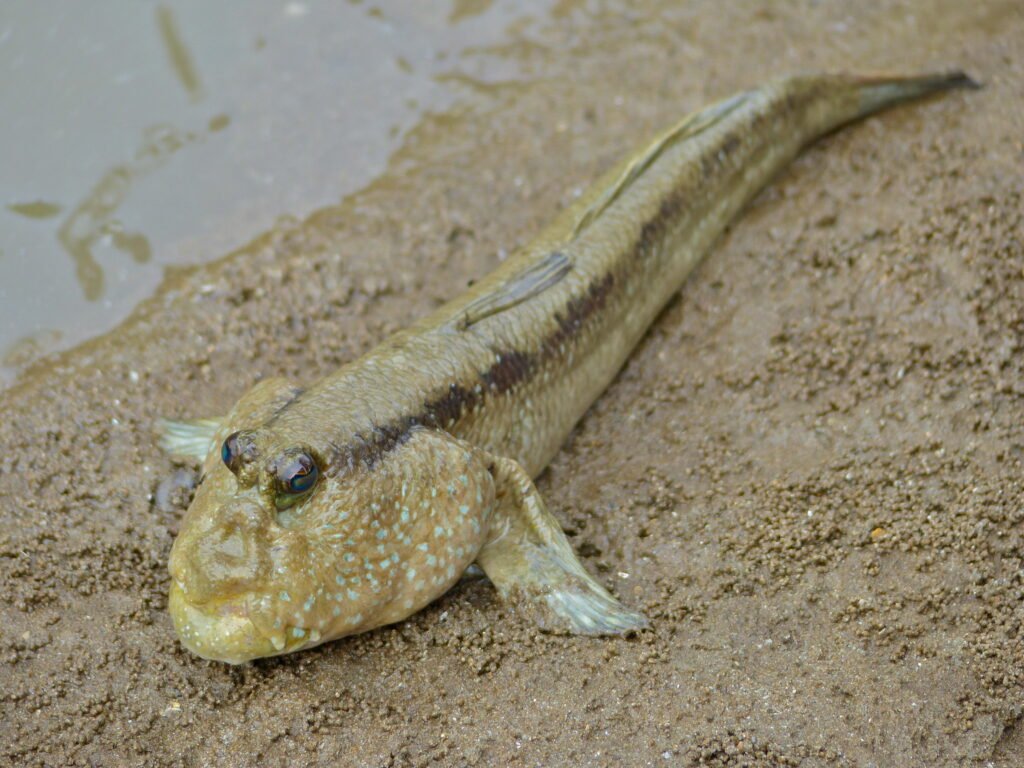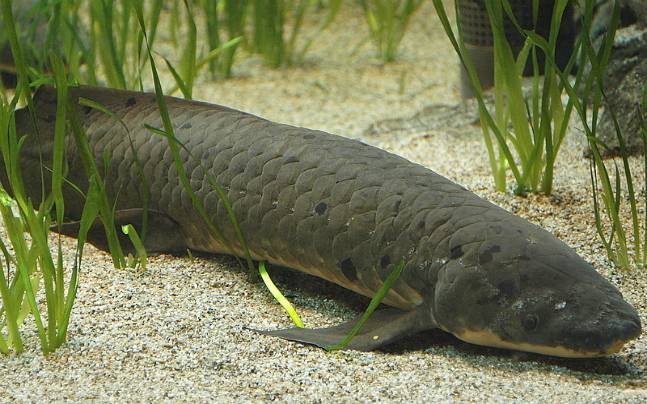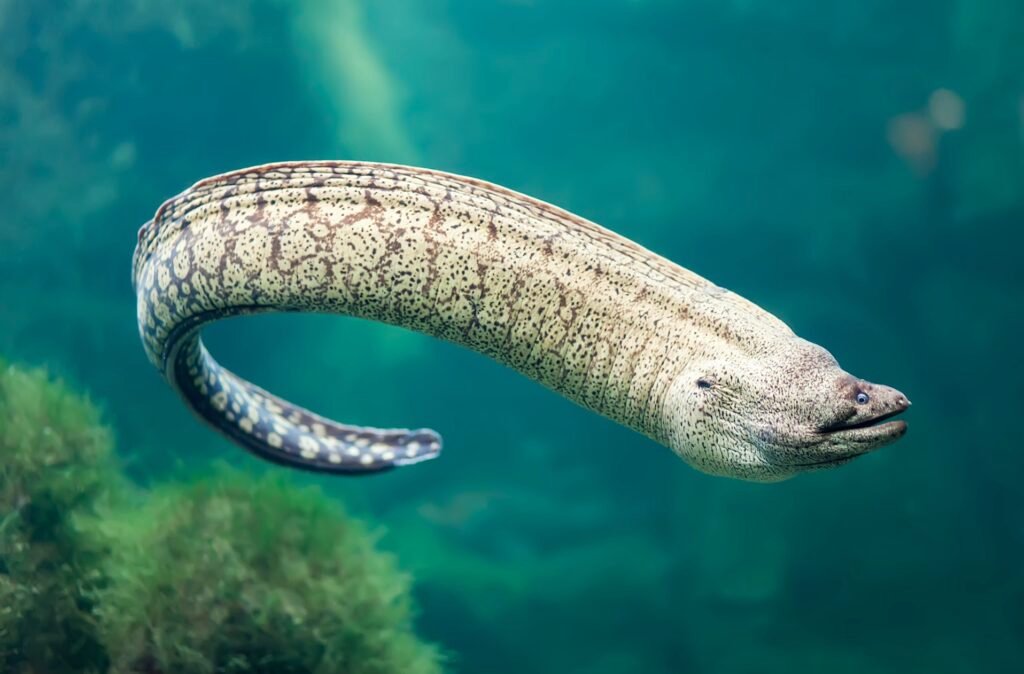Fish require oxygen; they also need to breathe. Jumping behavior can be caused by adverse conditions in the aquarium or pond. If you see fish jumping, be sure to check the water conditions. It depends on a series of factors in the water parameters so that the fish have some atypical behavior when breathing. Few of them are adapted to live temporarily or entirely out of water. And this calls our attention, for when the fish are on the outer surface in search of atmospheric oxygen or even stay out of the water, on the banks of rivers and lakes, and even in regions above the water level in aquariums. But How long can a fish live out of water?
Average survival time fish can survive out of water.
On average, fish can survive 8 minutes outside the aquatic environment; others survive hours outside the water, in addition to some species that are semi-pulmonary and manage to leave the marine environment and usually persist for hours, days, or months. Saltwater fish species tend to live longer, and some fish, such as amphibious fish, are specially adapted to being out of water for a long time, oxygen through their skin. In addition to having cutaneous respiration through the skin, they can partially absorb the oxygen that exists in the air; when the mucosa of the coat of these animals starts to dry, for reasons of hydration of the fish or amphibian, they back in the water.
How do fish breathe underwater?
The fish’s unique respiratory system uses the gills to allow water to enter and extract oxygen. There is a way of saying that the reorganizing gill does the same job as our muscles absorbing our oxygen. Fish move by currents to absorb oxygen dissolved in the water. Some fish can live for several days on land and breathe water or absorb oxygen with their skin. They are usually amphibious fish and more giant underwater creatures capable of storing air. But in the aquatic universe, not all marine animals have the same respiratory process. Some invertebrate animals, such as corals and jellyfish, do not have a respiratory system, and these gas exchanges take place directly between the body’s cells and the environment. In the case of whales, which are mammals, and sea turtles, which are reptiles, they can stay in the water for long periods, but from time to time, they need to swim to the surface to capture oxygen from the air and breathe. These animals, unlike fish, do not have gills but lungs.

Why do fish leave the water?
Fish are mostly known for swimming in the water and not jumping out of it, aren’t they? However, some fish tend to bounce, and some can jump high. Fish tend to jump for various reasons, the most common being when the fish is hunting or being hunted. Jumping is a suitable defense mechanism to fish survive. The fish being hunted can temporarily escape its predator and confuse it like the predator will not see where it has gone or predict where it will fall. But in some cases, there may be some change in the water parameters; low oxygen makes the fish seek atmospheric air (breathe air) and start jumping or swimming on the outer surface.
Species of fish that can breathe out of water
These distinctive fishes can survive and even thrive on the surface longer than those closest to land. They might not look like pets that could be kept in an aquarium, but they certainly are fascinating creatures.
Mudskippers
They are known for their distinctive appearance and size, as they survive in the ocean and are amphibians. They have adapted especially to stay out of the water, living on land with their pectoral fins placed in front of their bodies to support them to move and jump over muddy surfaces and even climb trees and lower branches. They can jump more than two feet with their fins. Its skin had blood vessels expanding. Ability to move in swamps and mud from birth. They adopted the breathing method. They have to deliver oxygen directly to the arterial circulation. They are known for their distinctive looks and size because they survive in the ocean and are amphibious. They have adapted to living on land with their pectoral fins placed onto their bodies to support them in moving and skipping across muddy surfaces and even climbing trees and lower branches. With its fins, they can leap to more than two feet with their fins.

Lungfish, the fish survive out of water.
The favorite fish for pet fish is Lungfish, and are descendants of the ancient Osteichthyes and are the only class of fish that retain air circulating throughout the land, lungs, and fins. Six plants were discovered in South America, Australia, and Africa. They use lungs and glands because their habitat tends to dry out, and they go into a phase called “aestivation” – a type of numbness that comes when they use theirs. These fish are found in freshwaters, such as lakes or rivers, and can fish live dormant for up to four years. After these long periods out of the water, they return to the water, but this varies according to seasonal rains and river smells.

Eel is a type of fish that can breathe out of water.
Eels are elongated species of fish, often found crawling on the sand and rocky surfaces. They can swim under obstacles at any time and downriver like dams and develop breath through their skin. It also lives below deep water but burrows and hides in the mud along rocky shores. Many call them walking catfish for their ability to crawl over ornaments. The metabolic rates of these fish can vary a lot precisely because of the ease of changing the environment, land, and water.

Climbing Perch walking fish invasion
This species of fish has a gut and a lung, making it highly adaptable to complex environments. They are invasive, meaning they can thrive in another territory simply by changing their diet. They are expanding out of their native areas such as Papua-Neuve-Guinea or Australia. They can live on the surface for 6 to 10 hours out of water. Anabas testudineus is a species of fish in the Anabantidae family, the climbing gouramis. It is native to Asia, where India and China occur.

Factors determining the duration of their survival
How long a fish can survive without water depends on its species, metabolism rates, and oxygen. Fish have a slow metabolism, and those who live in cold water can generally maintain their long-term survival. In the long run, fish will require more oxygen for their recovery. Some fish species can breathe without water for several hours to several months. There are catfishes extremely resistant to breathing out of the water due to their high mucosa production and being semi-pulmonary. Lungfish are famous for their historical adaptation to living in the most diverse climatic conditions.
How Long Can a Lungfish Live Out of Water
Lungfish of the order Lepidosireniformes can enter a dormant state (estivation) during periods of desiccation, that is, when there is a reduction in the water level in lakes and rivers. During this period, these animals have low metabolic rate and body temperature and some lethargy and appetite inhibition. African species burrow into the mud, forming a cocoon of mucus, and they can survive in these conditions for up to two years. The South American Lungfish show similar behavior, except mucus formation, whereas the Australian fish (with only one lung) does not show such behavior.
freshwater fish lungs survive out of water
Lungfish appeared in the Devonian Period, 400 million years ago. These animals have a bony endoskeleton and lobe fins and are included in the Class Sarcopterygii (fish with fleshy fins), Subclass Porolepimorpha, or Dipnoi. Commonly known as dipnoic, Lungfish are further subdivided into two orders: Ceratodontiformes, composed of species that have only one lung, and Lepidosireniformes, which includes fish with two lung sacs. Abundant until the end of the Triassic, 200 million years ago, currently, only three families and six species of Lungfish are recognized. These animals are characteristic of freshwater environments, inhabiting lakes and rivers, and are restricted to Africa, South America, and Australia. Australian Lungfish have a physiognomy similar to fossil forms, with a compact body with large superimposed scales and large pectoral and pelvic fins; on the other hand, African and South American fish have two lungs, whereas, in Australian fish, the left lung sac is atrophied.
Characteristics of fish that live out of water
Among the main characteristics of Lungfish, depending on the species, one can mention their elongated body, similar to that of an eel, without a defined tail fin. On the other hand, these animals have long, fibrous pectoral and pelvic fins in constant motion, investigating the environment. These structures have susceptible extremities, allowing the fish to detect changes in water pressure and turbulence, which, together with its keen sense of smell and taste, compensate for its low power of vision; these fish are practically blind, distinguishing only the shape and movement of objects. Thus, the sensory structures present in the fins, lateral line, and snout (electroreceptor organs) increase the perception of Lungfish about the environment, helping their search for food and protection. The lateral line can even present different distribution patterns of sensory organs (pores), allowing the identification of species, which can reach up to 2 meters in length, weighing about 10 kilograms. In general, Lungfish breathe through gills during the young phase of their life cycle (especially during the larval stage), which are lost, in most species, as the fish develop. In this way, these fish start to breathe through their primitive lungs. Lung formation occurs through the connection between the alimentary tract and the swim bladder, lined by numerous blood vessels. To live, dipnoics place their muzzle above the surface of the water, opening their mouth to suck in the surrounding air, producing a distinctive sound. All species perform this procedure, except for the Australian Lungfish (Neoceratodus forsteri), which inhales air through its nostrils, and breathes most of the time through the gills (when the water is well oxygenated); on the other hand, when oxygen levels are reduced, this species uses its primitive lung to supplement its respiratory rate, capture dissolved oxygen. As in terrestrial vertebrates, gas exchange in Lungfish occurs in small vesicles located within the lung sac. In addition to the partial loss/disposal of the gills, Lungfish also have teeth that fuse to form dental plaques used to chew food. These animals are omnivores and consume fish, crabs, and lobsters and can also act as cannibals. Regarding reproduction, the dipnoic deposit their eggs in nests that they burrow in watercourses (some species also deposit their eggs in aquatic vegetation), and there is parental care on the part of the male. During the reproductive season, males also develop fleshy lumps on their pelvic fins, formed by capillaries that release oxygen from the blood into the water, increasing the concentration of this gas around the newborn offspring.
Conclusion
Yes, fish can survive outside water, but How long can a fish live out of water will depend on what species they are. Generally, fish breathe by absorbing oxygen from the water using their gills. However, several species of fish have adapted to live water, absorbing oxygen through their skin. Some fish, such as West African Lungfish, can even survive out of water for several years in periods of conditions (hypoxia).
